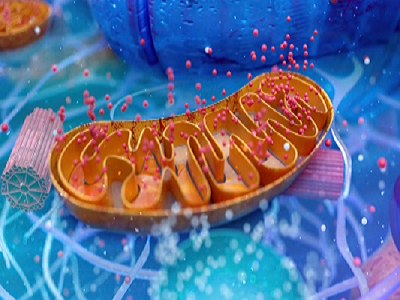
Reactive oxygen species (ROS) are chemically reactive molecules formed during aerobic metabolism. These ROS include superoxide anion, hydrogen peroxide, hydroxyl radicals, singlet oxygen, ozone, and nitric oxide. The physiological roles of ROS are unknown, although they can become pathologically elevated and are of great significance in diseases due to the shock of the innate immune response.
Bilirubin is the principal pigment in bile and is gaining attention for its potential application for diseases including cancer, diabetes, ischemia-reperfusion injury, asthma, and inflammatory bowel disease (IBD). As a natural antioxidan
t, bilirubin can efficiently scavenge ROS via endogenous mechanisms. Due to its antioxidant properties, bilirubin is being included in a number of designs for antioxidative nanomedicine. The extensive and ubiquitous role of ROS in disease processes suggests that bilirubin-based nanotoxicity will demonstrate a wide array of clinical applications.
Potential of Bilirubin Nanomedicines in Treating ROS-Mediated Diseases
-
Capabilities of Bilirubin Antioxidant Properties
First, bilirubin acts as a strong antioxidant, neutralizing excess ROS and preventing oxidative stress and cellular damage. This mechanism is integral for decreasing or stopping disease progression in many diseases.
-
Nanomedicine for Targeted Delivery
However, clinical use of bilirubin suffers from its low solubility and instability. Thus, the field of nanomedicine has emerged to tackle this barrier to use. By conjugating or encapsulating bilirubin into nanoparticles, it can become more soluble, stable, and bioavailable. This approach will also result in better, targeted delivery to ROS-damaged tissues.
-
Therapeutic Uses Across Disease Types
With these advances, bilirubin happens to be an effective nanomedicine for a host of ROS-mediated diseases, including cancer, cardiovascular disease, neurodegeneration, and chronic inflammation. These nanoparticles not only neutralize ROS at the point of damage but also serve to protect healthy tissue, improve treatment efficacy, and reduce side effects.
Therapeutic Benefits in Specific Diseases
Gastric Ulcers (GU)
Alcohol ingestion or excessive use of NSAIDs typically initiates gastric ulcers and triggers oxidative stress and inflammation. Researchers developed chitosan-bilirubin conjugate (CS-BR) nanoparticles to counteract oxidative stress and inflammation. CS-BR nanoparticles significantly diminished inflammation and oxidative stress in gastric epithelial cells. In pre-clinical model systems, they significantly improved the signs of acute GU.
Cancer
The tumor microenvironment (TME) typically has increased concentrations of reactive oxygen species (ROS), making them attractive targets for ROS-sensitive drug delivery systems. Scientists developed hyaluronic acid-bilirubin nanoparticles (HABN) loaded with doxorubicin (DOX@HABN) because the nanoparticles would target CD44-overexpressing tumor cells with the hyaluronic acid shell. Meanwhile, the bilirubin core enhances ROS sensitivity and contributes to anti-cancer effects. As a result, this dual-action system improves drug release precision and reduces systemic toxicity.
Acute Lung Injury (ALI)
A life-threatening condition characterized by inflammation and respiratory distress, acute lung injury causes debilitating effects due to ROS and oxidative stress. Therefore, we developed a bilirubin-based ROS-sensitive nano-scavenger (GP@BR) of glycol chitosan-bilirubin and PEG-bilirubin that successfully reduces ROS in lung tissue, which reduces inflammation and further tissue injury.
Cerebral Ischemia
Cerebral ischemia occurs as a result of stroke and leads to blood flow restrictions and ROS production. Researchers developed chitosan-bilirubin nanoparticles (ChiBil) loaded with atorvastatin, which provide conceptual improvements by providing ROS-responsive treatment that targets ischemic lesions, improves drug delivery to lesions, and reduces the side effects of the non-targeted atorvastatin treatments.
ROS Detection
In addition to therapy, bilirubin-based nanotechnology has applications in diagnostics. Traditionally, magnetic relaxation switching (MRSw) has been used for biomarker detection. Recently, scientists built on this idea for detecting ROS using PEG?bilirubin?coated superparamagnetic iron oxide nanoparticles (PEG-BR@SPIONs). Upon exposure to ROS, these particles aggregate, resulting in a substantial decline in T2-weighted MRI signal intensity. Furthermore, near-infrared fluorescent dyes can also be coupled for dual-mode imaging.
Age-Related Diseases (ARDs)
With populations aging, age-related diseases (ARDs) present a growing health burden. ROS generation is linked to a number of cellular and physiological events, namely increasing lipid peroxidation, protein oxidation, and DNA damage. Antioxidants like bilirubin definitely mitigate ROS effects. Advances in nanotechnology provide an avenue for bilirubin-based nanomedicine to battle oxidative stress and reduce age-related cellular damage.
Conclusion
In conclusion, bilirubin-based nanotherapeutics represent a meaningful way to treat ROS-mediated diseases. Researchers can combine bilirubin, a natural antioxidant molecule, with nanotechnology to leverage its precision and versatility, thereby enhancing drug solubility, stability, and delivery. As a result, they enhance therapeutic outcomes while minimizing side effects.
Nevertheless, further research is essential. Future studies must focus on optimizing these formulations, evaluating long-term safety, and confirming clinical efficacy across different ROS-associated diseases. If successful, these innovations could lead to a new generation of targeted, effective therapies for some of the most challenging medical conditions.








